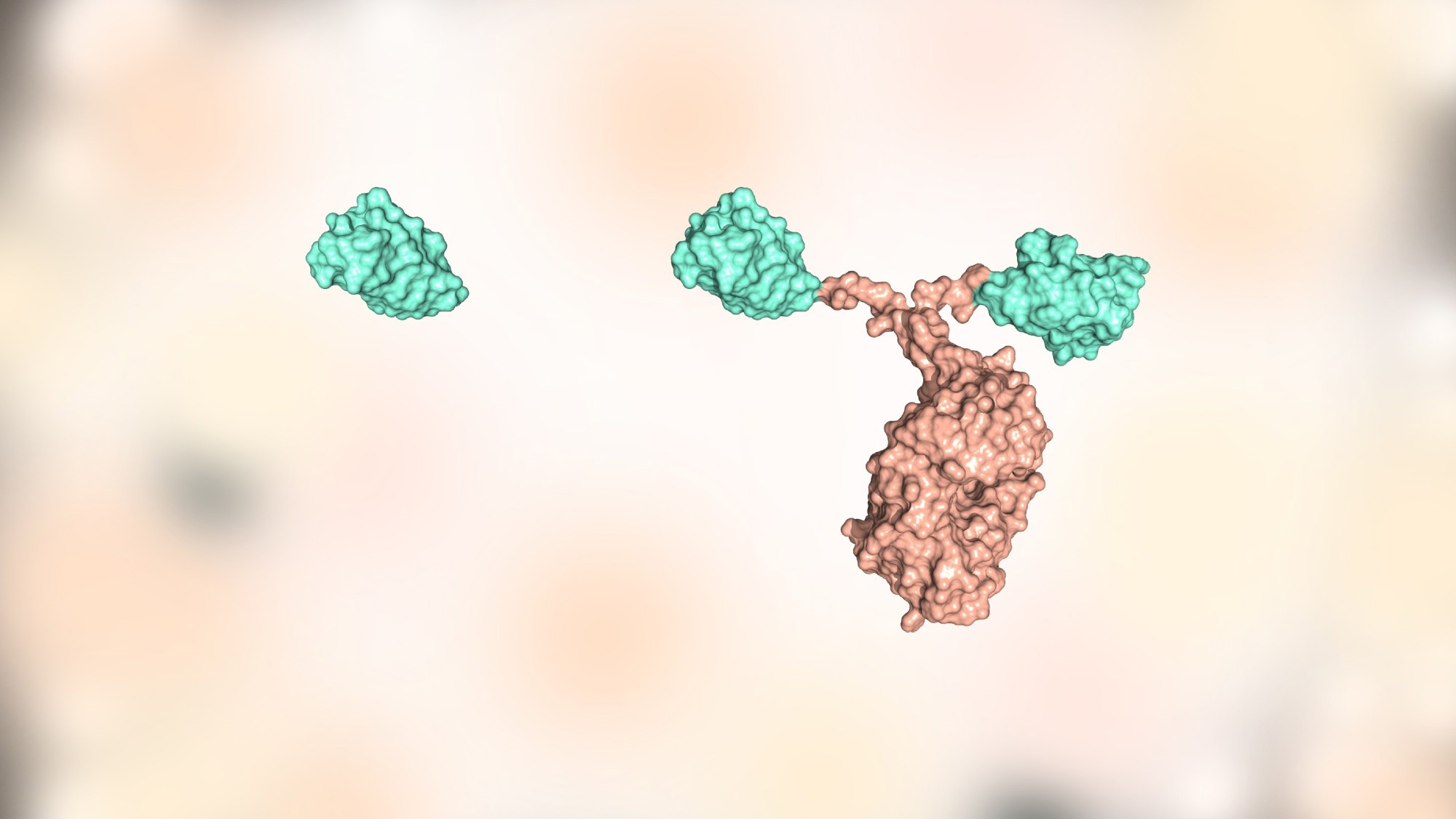In a recent study published in the Communications Biology Journal, researchers investigated the structures of 340 antibodies (Abs) and 83 nanobodies (Nbs) bound to the severe acute respiratory syndrome coronavirus 2 (SARS-CoV-2) spike (S) glycoprotein's receptor-binding domain (RBD).
 Study: SARS-CoV-2 antibodies recognize 23 distinct epitopic sites on the receptor binding domain. Image Credit: Huen Structure Bio/Shutterstock.com
Study: SARS-CoV-2 antibodies recognize 23 distinct epitopic sites on the receptor binding domain. Image Credit: Huen Structure Bio/Shutterstock.com
Background
Epitopic sites (ES) are critical to the immunogenicity of antibodies, particularly in SARS-CoV-2 variants. Understanding these relationships is required for the development of reasonable design solutions.
Recent attempts have used segmental techniques and computational resources to explain antibody reactivity and create novel binding activities to elicit more broadly neutralizing antibodies.
About the study
In the present study, researchers performed a structural analysis to further our understanding of the fundamental mechanisms of SARS-CoV-2 pathogenesis and neutralization in the context of the human immune system.
The researchers concentrated on antibodies and nanobodies attached to spike RBD to create a complete structural framework to help us comprehend antibody- and nanobody-receptor-binding domain recognition.
A structural categorization was provided based on quantitatively specified interacting amino acids on the receptor-binding domain and clustering analyses. The clustering approach was utilized to assess epitopic site similarities.
Furthermore, the team studied the molecular properties that identify these Abs and obtained broad insights concerning the basis of antibody-antigen interactions by using a rigorous review of surface characteristics of the receptor-binding domain that antibodies and nanobodies detect.
The structures of antibodies (as fragment antigen-binding regions (Fabs) and the variable domains (Fvs)] and nanobodies [as sybodies derived from synthetic libraries or the variable heavy-chain domain (VHH)] complexed with the S glycoprotein or its receptor-binding domain were examined as obtained in the protein data bank (PDB) and the Coronavirus Antibody Database (CovAbDab) to identify features common between epitopic sites of the RBD.
Since the biophysical fundamental of binding (based on hydrophobicity, charge, van der Waal forces, and hydrogen bonding) was reflected in the contacts, the team chose to simplify the assessment by determining inter-atomic contacts at the interface between antibodies (paratopic) and antigenic (epitopic) residues. A contact distance threshold (5.0) was used for the Ab-Ag interactions.
Antibody (paratope) contacts were plotted as hits vs. the RBD (epitope) residue number for the light (L) and heavy (H) chains of the antibodies separately, as well as overall for the L and H chains together.
Nbs that struck the receptor-binding domain residues were also investigated. Each antibody candidate's buried surface area (BSA) was calculated.
The proportion of antibodies and nanobodies that recognized each of the 23 ES was recorded as an indicator of the relative immunogenicity of each of the 23 ES.
Following the identification of epitope locations, an investigation of CDR loop contributions and epitope-paratope interactions was performed. The ESs and binding motifs were analyzed using cluster analysis. It was discovered that there is a link between ES and SARS-CoV-2 escape mutations.
Results
The CovAbDab database comprised 6,746 antibodies and 620 nanobody sequences, with 6,321 Abs obtained from humans, including vaccinated individuals, and 390 from humanized murine or bacteriophage display antibody libraries.
Nbs sequences include 620 from camelids and 276 from camelid-derived bacteriophage display libraries. The researchers generated X-ray or cryo-electronic microscopy (EM) structures of 340 antibodies and 83 nanobodies for structural investigation.
On the S RBD surface, 23 different epitopic locations were discovered, and the rates of amino acid use in the associated complementarity-determining region (CDR) paratopes were calculated.
The 23 ES on the RBD, partially distinguished by secondary structural properties, could be detected at various frequencies. Ten percent of Abs could recognize common traits such as ES16 as viewed by Abs or ES11 as seen by Nbs. Each ES bin had almost the same number of Ab and Nb contacts.
The clustering analysis identified binding motifs of the paratopes, which can be used to create vaccines and therapeutics for SARS-CoV-2. H chains gave 5,623 connections to 340 Abs, whereas 83 Nbs had 1,836 interactions. The distribution of hits differed for different locations, with Nbs recognizing the area between RBD residues 368 and 386 more often.
Several continuous sequences of RBD amino acids that make antibody contact were visible, although the number of hits showed great variations for different parts of the RBD's surface. Each ES can be allocated to one out of four main classes or the RBM detected by the receptor for ACE2.
The three amino acids most favored for binding any ES of RBD were tyrosine (Y), serine (S), and arginine (R). Tryptophan was utilized more commonly in Nbs than antibodies.
A similarity criterion of 0.85 resulted in the discovery of 33 Abs clusters, A1 to A33, and 10 Nbs clusters, N1 to N10. SARS-CoV-2 variant mutations and the ES to which they correspond were studied.
XBB.1.5 had P and S replacements for V445 and G446, respectively, from ES11, and S and Q substitutions for F490 and R493, respectively, from ES19.
Surprisingly, Omicron escape mutations are found in numerous different ESs of the receptor-binding domain, offering a daunting obstacle to developing novel vaccines and therapeutic antibodies.
Implications
Overall, the study findings showed the common characteristics of 23 commonly touched ES and the structural structure of the receptor-binding domain surfaces that interact with Ab and Nb. Both Abs and Nbs identified common locations, and some sites were preferred by either Abs or Nbs.
The identification of authorized SARS-CoV-2 therapeutic antibodies for neutralizing developing variants and Omicron subvariants may be aided by investigating RBD epitopes and their matching Ab paratopes.
Therapeutic antibodies, such as EvushieldTM, are unsuccessful due to the analysis of ES identified by antibodies and nanobodies and the identification of particular ES impacted by VOC mutations.